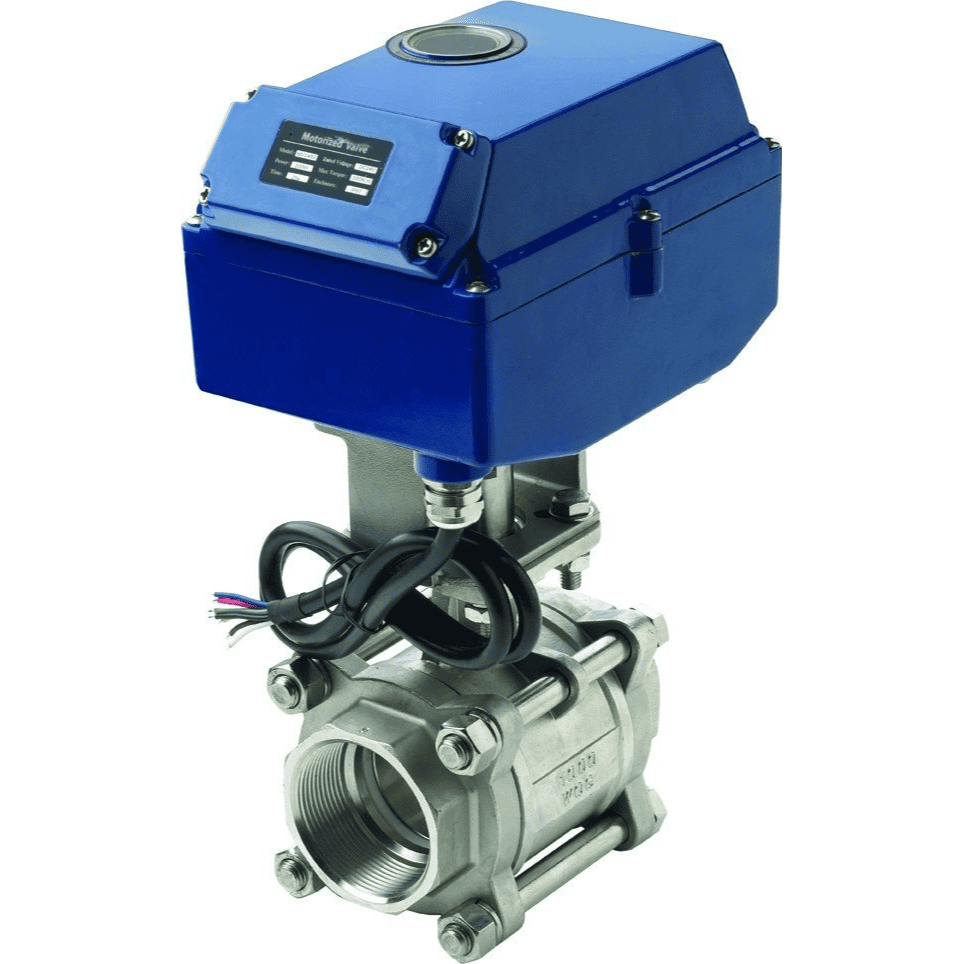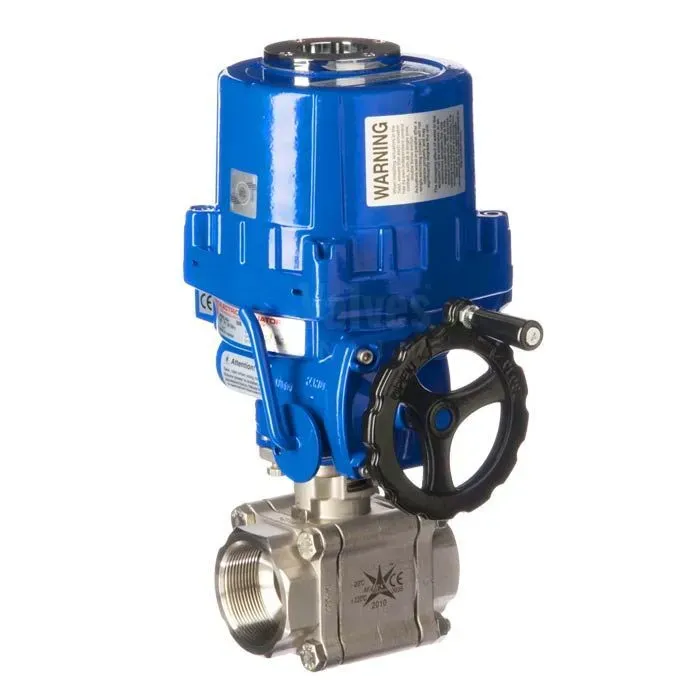
As industries across the globe continue to adopt smart and energy-efficient technologies, electric ball control valves have emerged as a critical solution in process automation and fluid control systems. Often referred to as motorized ball control valves, these devices seamlessly integrate the simplicity of mechanical valves with the intelligence of electric actuation, offering unmatched precision, automation capability, and efficiency across a wide array of applications.
In this comprehensive feature, we delve into the structure, benefits, applications, and comparisons of electric ball control valves—providing readers with a deep understanding of why these valves are increasingly replacing traditional manual, pneumatic, or hydraulic systems in modern industrial settings.
An electric ball control valve is a flow regulation device that uses a rotating ball with a central bore to open or close fluid pathways. The rotation is powered by an electric actuator mounted directly to the valve stem, allowing the ball to move 90 degrees with precision. This quarter-turn motion makes the valve open or close completely, although modulating types also exist to provide partial flow control.
The system consists of two primary components:
Ball Valve: The mechanical portion that regulates flow by rotating a ball inside the valve body.
Electric Actuator (Servo Motor): The control component that converts electrical energy into mechanical motion to operate the valve.
Electric ball valves can be configured for basic two-way open/close operation or advanced modulation and three-point control. Thanks to their ISO 5211 flange interfaces, both the actuator and the valve body can be swapped out with standardized components, allowing flexibility in replacement or upgrades.
These valves are commonly used in HVAC systems, water treatment plants, chemical processing, oil and gas facilities, and anywhere reliable, remote, and automated control of liquid or gas flow is required.

The growing popularity of electric ball valves stems from a combination of technological, environmental, and economic benefits. Let’s explore some of the most compelling advantages:
Unlike pneumatic or hydraulic systems that require extensive energy to generate air or fluid pressure, electric actuators are directly powered by electricity, which reduces energy consumption and operational emissions. Their efficiency makes them a more sustainable option in eco-conscious industries.
Electric ball valves can be fully integrated with modern automation systems such as PLCs (Programmable Logic Controllers) and DCS (Distributed Control Systems). This allows seamless automatic control over complex industrial processes, leading to improved operational precision, better production consistency, and reduced human intervention.
Thanks to their simple design and fewer moving parts compared to pneumatic systems, electric ball valves are relatively easier to maintain. Components such as the electric motor and control circuitry are modular, which simplifies inspection, troubleshooting, and repair.
These valves can handle a diverse range of fluids—including high-temperature and high-pressure liquids, corrosive chemicals, and gases—making them ideal for industries ranging from petrochemical and pharmaceutical to food and beverage.
The use of a spherical ball as the closure mechanism ensures tight sealing, minimal leakage, and dependable performance even under challenging conditions.
While both electric and pneumatic actuated ball valves perform similar functions, they differ in several key performance areas. Here’s a detailed comparison based on critical operational parameters:
Pneumatic actuators are known for their rapid response and fast rotation, often completing a 90-degree turn in under a second. In contrast, electric actuators rotate more slowly due to the nature of motor-driven control, though this slower action can be beneficial for processes requiring gradual flow adjustments.
Pneumatic systems typically have fewer internal components and are therefore more robust in rugged environments. They generally last longer with minimal maintenance. Electric actuators, while advanced, contain complex electronic components that can degrade over time or require more frequent maintenance. However, advances in electric actuator design have significantly improved durability in recent years.
Electric actuators excel in precision control. They can be finely tuned to open or close to exact degrees (e.g., 22°, 45°, 60°), offering exceptional modulation for delicate flow requirements. Pneumatic actuators can also be used for modulation, but they rely on air pressure control, which can be susceptible to fluctuations and leaks, reducing their overall accuracy.
Electric ball valves consume energy only when in motion and do not require continuous energy to maintain a position. In contrast, pneumatic systems rely on compressors and air preparation equipment, which are energy-intensive and need to run continuously to maintain pressure, resulting in higher operating costs over time.
Pneumatic actuators are inherently easier to equip with fail-safe features. Spring-return designs automatically return the valve to a safe position in the event of air loss. Electric actuators can also be equipped with fail-safe features using springs or backup batteries, but these solutions are often more expensive and complex to implement.
Electric ball valves can be more expensive upfront due to the higher cost of actuators. However, they do not require a centralized pneumatic infrastructure—no compressors, dryers, or air lines—making them ideal for facilities that lack an existing compressed air system. Pneumatic valves, on the other hand, are cost-effective if a pneumatic network is already in place but become costlier in remote or isolated installations.
Electric actuators typically come with built-in position feedback, digital displays, and diagnostics that can be integrated into smart control systems. Pneumatic actuators usually need external position indicators and limit switches, making integration more complex.
Electric ball control valves are widely used in industries that demand remote control, precise modulation, or integration with smart systems. Some notable applications include:
HVAC Systems: Regulating hot and chilled water in heating and cooling systems for optimal energy usage.
Water Treatment: Controlling flow in filtration, chemical dosing, and wastewater treatment processes.
Oil & Gas: Managing flow in pipelines and processing plants with reliable, explosion-proof electric actuators.
Food and Beverage: Handling sanitary fluids with stainless steel ball valves in automated bottling or mixing lines.
Pharmaceuticals: Ensuring sterile and accurate fluid control for consistent product quality.
Power Generation: Controlling steam, condensate, and fuel supply lines with minimal leakage and high reliability.
While electric ball valves offer many benefits, their suitability depends on application-specific requirements. Key factors to consider include:
Response Time: If the process demands very fast opening/closing, pneumatic valves might be a better fit.
Ambient Conditions: Electric actuators need protection from harsh environments like high humidity or explosive atmospheres (unless rated for such).
Power Supply: Electric valves require a reliable power source, which might not be feasible in certain field conditions.
Maintenance Expertise: Technicians must be trained in electrical troubleshooting to effectively maintain these systems.
With the rise of Industry 4.0 and digital transformation in manufacturing, electric ball control valves are expected to play an increasingly vital role. The growing emphasis on energy conservation, real-time monitoring, and remote operations is driving demand for intelligent valve systems that are easy to install, control, and maintain.
Smart actuators with Bluetooth, IoT connectivity, cloud integration, and predictive maintenance capabilities are now entering the market, offering even greater value to end users. As prices decrease and technology advances, even small- and medium-sized enterprises are finding electric valves a viable and attractive option.
Electric ball control valves have become an essential component in modern automation and fluid management systems. They offer a perfect balance of precision, energy efficiency, and reliability—especially when integrated into intelligent control architectures. Although their initial cost may be higher than pneumatic systems, the long-term benefits in energy savings, ease of integration, and enhanced control often justify the investment.
Whether you're upgrading an existing facility, planning a new industrial system, or seeking to optimize your automation strategy, electric ball valves present a future-ready solution that aligns with today’s demands for smarter, greener, and more efficient operations.
As industries continue to evolve, electric ball control valves will undoubtedly play a central role in shaping the future of process control.